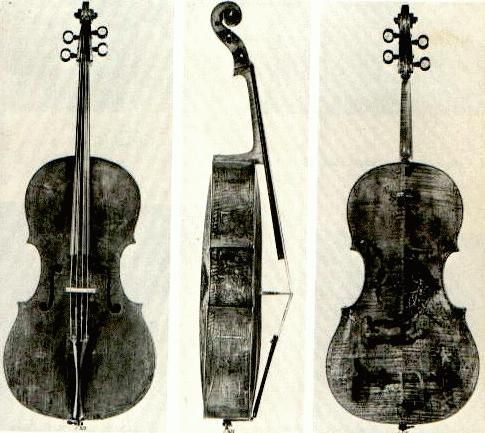
When Andrea Amati crafted a bass viol, now known as “The King Cello”, it was unlikely he would think of the world fame it now holds. The King Cello is the oldest cello in existence. Constructed by Andrea Amati of the famed Cremonese Amati violin making family, this cello is nearly 500 years old. In fact, this instrument wouldn’t have even been called a cello at the time of its construction, but rather a ‘basso’, for being the bass instrument in the viol family. Bassos were not the same size as the modern cello. It is speculated that in 1801, Sebastian Renault, a luthier working in Paris, reduced the king cello. Instrument modifications were extremely common in this time, and instruments being modified with the addition or the reduction of wood was a standard practice. Regardless, this ancient instrument is a beautiful, modern look into the past.
Who Was Andrea Amati?
Andrea Amati was a Cremonese luthier, and a member of the Amati violin making family. The Amati violin making family was a prominent family in Cremona, Italy from the mid 1500’s to the mid 1700’s. Although no formal documentation exists, it is widely believed that young Antonio Stradivari was an apprentice in Nicolò Amati’s workshop in the late 1600’s, Nicolò Amati being the grandson of the great Andrea Amati.
It is suspected that The King Cello was made under the order from the Queen Regent of France, Catherine de Medici, for her son, Charles IX. Over his career, it is estimated that Andrea Amati crafted an entire 38 instruments for Catherine de Medici.
Artwork on the Back of the King Cello
One factor that makes this instrument incredibly unique to the modern eye is the artwork that is present on the back of this instrument. In the 1500’s, having some form of design on a string instrument was incredibly more common. These instruments were as much a piece of physical art as they were musical art. The back of ‘The King’ is painted and gilded with the coat of arms and the motto of King Charles IX, son of Catherine de Medici. The motto reads Pietate et Iustitia, translating to ‘piety and justice’.
Even today, the colors are still rich, although they were probably more vivid 450 years ago. It is evident that the King Cello was reduced from being a bass viol into a cello due to the visible alterations to the artwork on the back of the instrument.
On the back of the cello, there are many large images, split in half by where two pieces of wood on the back of the cello meet. When the cello was reduced, and wood was taken off the instrument, parts of the design had to be removed. Although you can still clearly see the images on the back of the instrument, it is a distortion of the original piece of art.
Vive la Révolution
The King Cello was passed down through the French Revolution, until there was no French royal family to possess it. The French Revolution lasted from 1789-1799, and was a period of extreme turmoil and violence. Many possessions of the Royal Family were destroyed and palaces were looted. Of the original 38 instruments commissioned by Catherine de Medici, only a few survived the revolution. Luckily, the King instrument was one of them.
The Reduction
In 1801, Sebastian Renault made an initial reduction of two inches to the King Cello.. This was standard practice in the late 1700’s and throughout the 1800’s, as baroque and older style viols were transformed into instruments that could perform the music being composed during this time period. Even after this initial alteration, experts believe that several other, smaller, reductions were made to the King in order to make it the instrument that we know today.
The Sound
When an instrument is nearly 500 years old, survives the French Revolution, and then was taken apart, hacked away at, and reassembled, the sound becomes a mystery. Although the original sound of Amati’s work has been forever lost to time, as well as the alterations to the cello, the sound has been described as nothing short of breathtaking. This priceless instrument is not commonly played. Prominent violin expert Charles Beare heard the instrument in 1982 and described the sound as the greatest cello sound he ever heard, with perhaps the exception of one or two of the greatest cellos crafted by Antonio Stradivari.
The King Cello has a wondrous legacy, incredibly fitting for a wondrous instrument. An instrument from the heart of the renaissance, that went through a vicious war, and emerged as one of the best cellos the world has ever known. The King Cello now resides at the National Music Museum in Vermillion, South Dakota.
Article written by Erica Garcia



Leave a comment